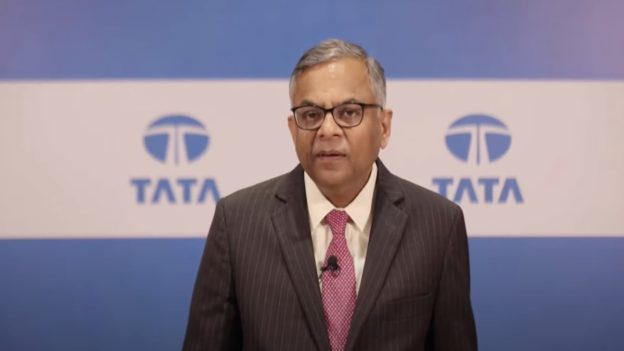Highlighting that India’s progress over the past decade has been “quite remarkable”, he said the economy’s position has gone from the 10th largest to the fifth-largest, and the country is now clearly the fastest-growing major economy.
India has the potential to become a $25-30 trillion economy by 2047, which is when the country completes 100 years of independence, Tata Sons chairman N Chandrasekaran said on Friday.
Highlighting that India’s progress over the past decade has been “quite remarkable”, he said the economy’s position has gone from the 10th largest to the fifth-largest, and the country is now clearly the fastest-growing major economy.
“This strong foundation sets the stage for a renewed vision for India at 2047. If we have to look at a size of $20 trillion economy, our per capita GDP would be at $13,000 — 6x the current levels. If we can raise our growth trending rate to 8% from 6.5%, we can achieve a $30-trillion economy. It will be 10x the current size,” he said in a virtual address at the Ficci’s annual convention and 95th AGM held in New Delhi.
However, Chandrasekaran said it is not only about the quantum of growth and the size of the economy, and as India celebrates the 100th year of independence, it will be essential to ensure that the fruits of long-term growth potential reach every citizen.
To achieve this successfully, he said, India will need to reduce air pollution to 1/4th of its current levels, and also produce universal and equitable access to safe and affordable drinking water. The country will also have to ensure half of the labour force comprises women which can be created by leading edge digitally integrated national childcare network. Also, eliminating malnutrition and moving towards coverage ratio equivalent to more than one doctor per 1,000 people from 0.5 currently needs to happen through strengthening the primary care system, as well as harnessing the digital transformation technology. He said in terms of education, the focus needs to shift from an “educational attainment to educational outcome”.
“To realise the potential of our vast talent pool, we will need to transform our skilling, research infrastructure as well as bring more women into the workforce. The capacity and quality of our skilling infrastructure should be scaled up to at least 10 million people per year. It will be important to develop dual approaches where we have both classrooms and industry-based learnings and internships,” he said.
Emphasising the importance of digital skills and adoption, he said the country’s research and higher education institutions need to level up in quantity and quality of research output, as India seeks to become a global leader in artificial intelligence, machine learning, advanced manufacturing, and next generation of products and services beyond the cloud, and IoT.
Chandrasekaran added that by 2047, more than half the Indians are likely to be living in cities from the current 35%, which means build-up of not just smart cities but also cities for the future, which are liveable, green and less polluted, and become job generation engines. He also emphasised that focusing on sectors like tourism can have a multiplier effect in this.
“I believe such a vision is much achievable by 2047 because of the uniqueness of the present moment. There is massive potential of technology to address many of the challenges of the economy. We have right human capital and scale, we just need to make right investments and focus on specific areas to achieve these results,” he said, adding that as global supply chains shift, there is a real opportunity to create India plus base supply chain as well.
https://www.financialexpress.com/economy/need-to-ensure-fruits-of-long-term-growth-potential-reach-every-citizen-tata-sons-chairman-n-chandrasekharan/2917396/





